Rev. John Lothropp's Ancestors |
Click on a name for info, click on an arrow to follow that branch, click Home to go to the main page, or click for an Alphabetic List of all Names. |
Arrows are disabled at this time. |
Note: Before 1752 the year began on March 25th. Dates between January 1st and March 24th were at the end of the year, not the beginning. |
| ~<^>~ |
Thomas Lowthroppe was born in Cherry Burton, Yorkshire, England about 1536 the eldest son of four known children born to Robert and Ellen Lowthroppe. Researchers say he was baptized there on June 19, 1536, probably in the Saxon built St Michael and All Angels Church. Without giving any documentation, researchers say that on September 5, 1575, Thomas married ancestor Maud and they had five additional children (see her bio for details). It should be noted that their marriage is not listed in either the Etton, South Cave, or Cherry Burton church registers for this time period. After Maud died, Thomas was again left with young children.
Thomas and Jane had nine more children, all baptized in Etton on the dates given — Margaret, February 13, 1590/1, married Mr. Bateman; Isabell, September 20, 1592; Lucy, January 4, 1593/4, married in Etton, Ralph Cawnsby, in 1613; Richard, October 12, 1595, married in 1634, in York, Dorothy Lawson; Mark, September 27, 1597, died unmarried; Lawrence, August 19, 1599, married Mary Lowthropp in 1629; Jane, March 14, 1600/1; Joseph, December 31, 1602; and Bartholomew, on March 1, 1604/5. Thomas wrote his will on October 5, 1606, and an abstract of it is printed in E. B. Huntington’s book, A Genealogical Memoir of the Lo-Lathrop Family in This Country, as follows: “1. Jaine, my wieff, lease, for 12 yr. for ed. of my younge children whom I give unto her with these legacies. 2. Richard my sonne, if he die, then to my sonne Mark, and if be be not of age XXI. my sonne to be a tutor unto him. 3. Jane my wieff and Lawrence my sonne, lease of Westwood. leas in territories of Scarbrough. 4. Robart-three kye gatts in Etton. 5. Markes, Lawrence, Joseph, and Bartholomew-moiety of lease of Etton pke or Calfe pke. 6. Bartholomew, pte Freehold Iande called temple wood. 7. Robart-best horse. 8. Isabel Burne, my daughtr, one cowe. 9. Katherine Aket, my daugbtr, one cowe. 10. Wm. Wykam, Thos. Wykam, and Jayne Wykam, children to my daughter Audric Wykam, one cowe among them. 11. Robert-my best, bound wayne.
13. Jane, Anne, Isabell, and Elizabeth Akeit, daughters of Wm. Akeit, my son-in-lawe each of them, one ewe. 14. Poore of Etton, vjs-viijd. 15. The rest to Jane, my wief, Richard, Lawrence, Marks, Joseph, Bartholomew, my sons, and Margaret, Luce, and Jane Lowthorp, my daughters whom I make executors. Witness. Thos. Cardener, Alexander Lyon, Henry Fenby. Proved, Jan. 13, 1606-07.”
|
| ~<^>~ |
Maud is believed to be the second wife of Thomas Lowthroppe, although there is much confusion about exactly who she was. She was born sometime between 1538 and 1556. Some researchers say she was the daughter of John Howell and Gauche St. Andrews, daughter of John St. Andrews. In the October 1995 issue of The American Genealogist #280, Vol. 70, No. 4, there is an article written by Clifford L. Stott called "Lothrop and House Entries in the Parish Registers of Eastwell, Kent." Stott writes that Maud (last name unknown) was the name of John's mother. So there is a great deal of uncertainty about John’s mother. After much research, it is plausible to say tha Maud was born about 1556 and her ancestry is unknown. Researchers say that on September 5, 1575 Maud married Thomas in Etton, after his first wife died and raised his existing six children. They had at least five children together, all baptized in Etton on the dates shown “Maud Lowthrop, wife to Tho” died and was buried on June 26, 1588, in Etton leaving her husband, again a widow with young children. (Mouse over and click on her butial record image on left to enlarge it in a new window/tab.) |
| ~< Back to Chart >~ |
Robert Lowthroppe is believed to have been born between 1510 and 1513 in Cherry Burton, Yorkshire, England to parents Margaret Wade and John Lowthroppe. Some researchers say he was baptized in 1513 in Lowthrope, but give no supporting documentation. G. Andrews Moriarty, in his Genealogical Research in England, states that Robert “was undoubtedly the son of the John Lowthrop who was taxed at Cherry Burton in 1523/4 and was one of the defendants in the Star Chamber case in the reign of Henry VIII.” (This case is described in his father’s bio.) Robert lived a privileged life as his parents owned a large estate, including land in Cherry Burton and elsewhere. Robert married a woman named Ellen and they had at least four children (See Ellen for details). In 1545, Robert inherited the estate from his father, and during his lifetime made many additions to it. The Lowthroppe tax records for 1543 and 1545 read as follows: “Lay Subsidies for co. York. 35 and 36 Henry VIII. Burton Robert Lowthorppe at Isabella Lowthorpe's in manibus John Milsoin, in goods, (valuation) 4 pounds (tax) 4d.” In the book John Lothropp (1584-1653) A Puritan Biography & Genealogy, Richard Woodruff Price writes about the family wealth: “He appeared on a Yorkshire subsidy roll where he was assessed twice as much as any other inhabitant of the parish because he owned at least twice as Robert's Will was written on July 16, 1558 in Cherry Burton (listed as North Burton, Sheributon), and proved in the Prerogative Court of York on October 20, 1558. So it is assumed he died in mid October 1558 and probably is buried in the St Michael and All Angels Churchyard pictured left (mouse over image left). His will mentions his children, wife and servants by name, plus many others without relationship information. It also tells us he had three surviving sisters, but doesn’t give their names. The Reverend E. B. Huntington in his book Lo-Lathrop Family Memoir, written in 1884 says about the will: “This will is thus fully reported as best setting before us the condition and social position of this representative of the Lothrop family more than three centuries ago.” (Mouse over and click on his will image below to enlarge it in a new window/tab.) It is amazing that we have this information four and a half centuries later. It is printed in Huntington’s book as follows: |
"WILL OF ROBERT LOWTHROPPE OF CHERRY BURTON. |
| ~< Back to Chart >~ |
Ellen is said by some researchers to have been born between 1510 and 1518 to parents Thomas Aston and Bridget Harewell, in Cherry Burton, Yorkshire, England. There is no proof these are her parents. What we know of Ellen and her children comes from Reverend E. B. Huntington’s book, Memoir of the Lo-Lathrop Family. From this book we learn that Ellen mentions a sister named Margaret, in her will. We know Ellen’s given name from her husband Robert’s will, but many researchers believe she could be an Aston because in Robert’s will he names a Richard Eshton, but no relationship is given. Thomas and Bridget Aston did have a younger son named Richard so the Richard mentioned in the will could be Ellen’s brother, cousin, uncle, etc., but no documentation exists to support this. Also, there is no documentation that Thomas and Bridget had a daughter named Ellen or Margaret. Some researchers believe that Ellen and Robert are being confused with Ralph, son of Thomas Lathrop and Mary Salte of Staffordshire, who married a Mary Aston. Ellen married Robert Lowthroppe about 1535 in Cherry Burton and they had at least four children, all probably born in Cherry Burton, but how many is uncertain, as only four are mentioned in their father and mother’s wills — ancestor Thomas; John, said to have been baptized on April 19, 1537, never had children; Lawrence is said to have been baptized on March 21, 1538/39, married a woman named Elizabeth, and was buried there on June 8, 1602; and Margaret born about 1540-43, who married Robert Hodgeson. It should be mentioned that there isn’t documentation, other than the wills, for the children’s names and baptism dates.
Records show that a Helen Lowthrop was buried March 8, 1572/3 in Cherry Burton in St. Michael and All Angels ’s churchyard, pictured in her husband’s bio above. Some researchers believe she wouldn’t have been buried so long after the will was proved, as 10, or possibly even more, days is a bit long to hold a body in 1573. This researcher agrees, and thinks it possible that she was actually buried about February 18th. |
| ~< Back to Chart >~ |
John Lowthroppe is said to have been born between 1474 and 1480 in the Lowthorpe-Cherry Burton area of Yorkshire, England and he is the proven great-grandfather of Rev. John Lothropp. In Richard Woodruff Price’s book, John Lothropp (1584-1653) A Puritan Biography & Genealogy, Price writes about the town of Lowthrope:
“In the East Riding of Yorkshire, 180 miles due north of London, lies the small parish of Lowthorpe. The old Danish termination thorpe, usually altered to Today the parish has around two hundred residents; but the family names of Lowthrop, Lothropp, Lathrop, and other variations scattered around the world derive from this parish. John Lothropp, a man historians called ‘vexed and troubled,’ was born here and would make his influence felt in the religious life of two countries. From early English histories we discover interesting entries about various Lowthorpes of this parish and its vicinity: In Culleton's of London; Genealogical Collection, it states that John was 33 years old in 1513, which indicates he was born about 1480. Culleton also proposes that he was the son of Robert or Roberti Lowthrop, also of Cherry Burton and that John married Margaret Wade daughter of John and Margaret Wade there. Researchers believe this marriage took place between 1508 and 1511 and they had five children. Other researchers believe he married first Alice Lilley in about 1508 and they had three unnamed children together. Unfortunately there’s no documentation for either marriage or the name of John’s father. There was a John Lothrop born about 1509 in Dickering, but there’s no proof of his parentage. It should be noted that Cherry Burton is in the Dickering wapentake - a civil division of the country, established in medieval times, but are no longer used.What we know about John’s married life comes from his son, ancestor Robert’s will where he mentions that he had three sisters, but doesn’t name them. In Rev. Huntington’s book on the Lo-Lathrop Family he says about John: “He was, though belonging to a junior branch of the family, a gentleman of quite extensive landed estates both in Cherry Burton and in various other parts of the county, Of his parentage and of the names of his brothers and sisters, if he had any, we shall probably be unable to find the record, the early parish registers having disappeared. No record of baptisms before 1597, none of burials before 1561, and none of marriages before 1562, now remain.” Early in the sixteenth century, about 1513, John Lowthrop was living in Cherry Burton, about four miles from Lowthrope, and held extensive lands there, and in neighboring areas. According to The New England Historical and Genealogical Register, volume 84 pages 437 to 439, and information taken from the Lay Subsidies for County York, for the years 1523-1524 and 1540-1541, he appeared on a Yorkshire subsidy roll where he was assessed twice as much as any other inhabitant of the parish because he owned at least twice as much property. In about 1534, John was a defendant in the Court of Star Chamber over a dispute of “… one acre of customary land in the manor of South Dalton, co. York, with appurtenances in Cherry Burton, co. York, called Coke Merys…” James and Agnes Carter with Thomas and Isabell Layton charged that John along with others attacked them: “of their malicious and riotous minds, with clubs, staves, swords, daggers, pikes, etc. by force of arms, about Monday sennight next after the Feast of the Assumption of the Blessed Virgin [15 August] 25 Henry VIII [1533-1534], entered the land, took away the wheat which had been reaped, and reaped and carried off the rest, making assault upon James Carter, beating and wounding him, and putting him in jeopardy of his life.” In answer to the charge, John “denies that he is guilty of any riot or any other misdemeanor. Further, if he had committeed any such riot or misdemeanor, the King, by authority of Parliament, has pardoned to all his subjects all riots and misdemeanors committed before 3 November last, before which time the riot is said to have taken place.” John asked that “the petition be dismissed with costs.” John Lowthroppe is said to have died in or a few years before 1545 in Cherry Burton Parish, East Riding of Yorkshire, England, leaving his grand estate to his son Robert. He most likely was buried in the Cherry Burton churchyard. Unfortunately, no documents can be found for his death or burial. |
| ~< Back to Chart >~ |
Ancestor Towns of East Riding of Yorkshire
Lowthorpe is where it is believed the Lothropp family originated. It's about 20 miles from Cherry Burton. Etton and Cherry Burton are only one mile apart, so travel between the three locations was not a major concern.
Photo right is a tower windmill near Cherry Burton and Etton in Yorkshire, known as Etton or Cherry Burton Mill, showing a view from the front with no cap or sails, taken on June 27, 1935 by Mr.Donald William Muggeridge.
Cherry Burton: The wonderfully named village of Cherry Burton enters history through the descriptive talents of the Venerable Bede, who relates that St. John of Beverley performed a miracle at a place most historians associate with this location. Around 686 AD a nobleman by the name of Earl Addi calledon John to consecrate his new church at North Burton (though there are numerous 'Burtons' in the area, North Burton is thought by many to be the current Cherry Burton). John agreed, and when he had finished, the nobleman asked him to lay his hands on a sick servant, who was near death.
By the time of the Domesday Book the manor was held by the Archbishop of York for the Minster of St John. The Saxon church was probably made of wood, and was eventually replaced by a more durable Norman building of stone. By the mid 19th century the church was falling apart, so it was pulled down and an entirely new church was built. It is this Victorian building we see today. Cherry Burton today is a village and civil parish in the East Riding of Yorkshire, England. It is situated approximately 3 miles (4.8 km) north west of the market town of Beverley and lies to the west of the B1248 road. The civil parish is formed by the village of Cherry Burton and the hamlets of Gardham and High Gardham. According to the 2001 UK census, Cherry Burton parish had a population of 1,473. The village has a Costcutter shop which also acts as a post office and there is a village hall which holds live musical events and hosts an annual local pantomime. It also houses a traditional village public house known as the Bay Horse which has a popular events every week. On July 22, 2003, the village gained a Fairtrade Village status for promoting fairtrade and local produce. It is one of the few villages in the UK awarded with this status. |
| ~< Back to Chart >~ |
Lowthorpe: The small Village of Lowthorpe is located in the Wolds of East Riding of Yorkshire, England. It is situated approximately three miles north east of the centre of Driffield and seven miles south west of the center of Bridlington. Lowthorpe is scattered across quiet an area due to its remoteness, elegant houses and farm buildings appear along the quiet country road. During the 1900’s there was a railway station there which was a hive of activity. Post would be dropped off by the mail train every morning and then taken by horse and cart to the post office in the village. From there it would be taken by post men on bicycles to the outlying villages. They would return with outgoing mail which was put on the train bound for Hull.
St. Martin’s Church stands behind high conifers, which have grown tall over the years giving it a dark and gloomy appearance as you walk up the path towards it. It is believed to have been built in 1333, when the church was made collegiate by Sir John de Heslerton and housed six chaplains and three clerks. The college survived until its dissolution in 1579, when it declined in status to a Parish Church. The chancel now is open to the skies but the church remains supported and used today. There is a strange family tomb on the left as you enter the church, which depicts a man and a woman in flowing robes.
From the Yorkshire Wolds to the flat Holderness Plain, the countryside is spectacular. Open roads lead to the charming and ancient market towns of Howden, Hedon, Pocklington, Driffield, Lowthorpe and the historic town of Beverley, appealing not only for its glorious Gothic Minster but also for its lovingly preserved old streets and buildings.The Wolds have countless villages, with characterful inns, ponds and fine churches. For a glimpse of the grand lifestyle of landowners in times past, a visit to Burton Agnes and Burton Constable, are both outstanding Elizabethan country houses, and the Georgian Sledmere House and Sewerby Hall. |
| ~< Back to Chart >~ |
Notes of interest:
|
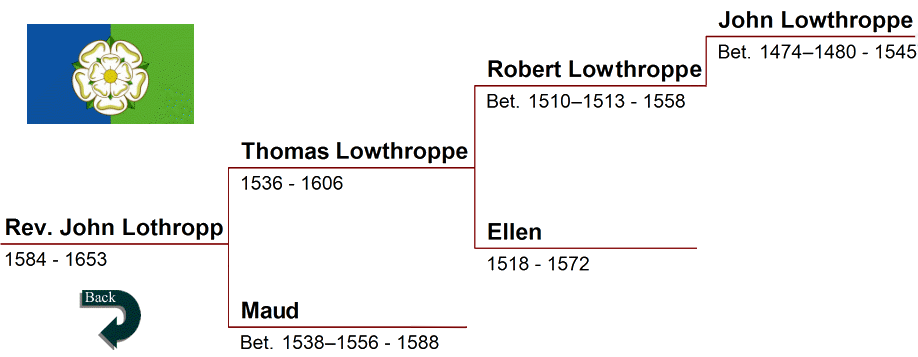


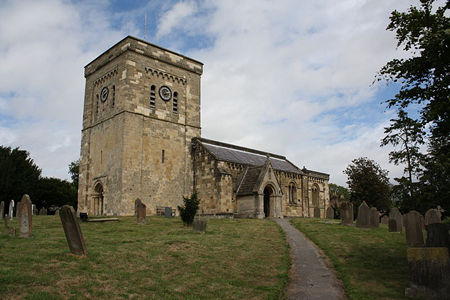 12. Robert, all my freehold land in So. Dalton and Walkinton.
12. Robert, all my freehold land in So. Dalton and Walkinton. 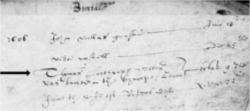
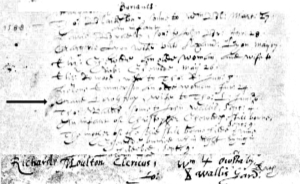
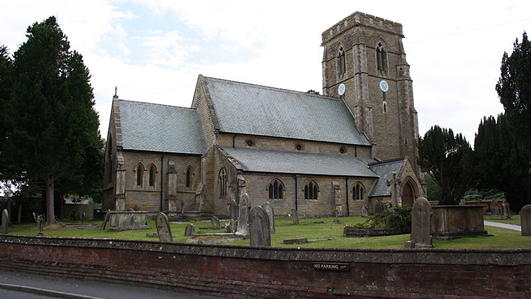 much property.” Price continues with “Robert must have been shrewd or lucky or both, for during his lifetime, those properties increased considerably.” According to English Origins, First Series, in “1557/8 Robert sued Marmaduke Whytyng and Alice, his wife, over lands in Wolkyngtin.”
much property.” Price continues with “Robert must have been shrewd or lucky or both, for during his lifetime, those properties increased considerably.” According to English Origins, First Series, in “1557/8 Robert sued Marmaduke Whytyng and Alice, his wife, over lands in Wolkyngtin.”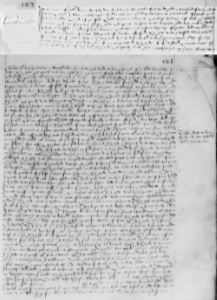

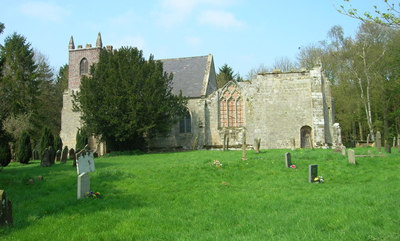 throp, refers to an outlying farmstead or hamlet. The Lowthorpe church, dedicated to Saint Martin during the reign of Richard II (1377-1400), was originally a very handsome structure; but in the twenty-first century it stands partially ruined and the tower and chancel are almost entirely overgrown with ivy. The Gothic architecture of the church indicates that it was built about the time of Edward III (1327-77). One of its chaplains, not surprisingly, was Robert de Louthorp.
throp, refers to an outlying farmstead or hamlet. The Lowthorpe church, dedicated to Saint Martin during the reign of Richard II (1377-1400), was originally a very handsome structure; but in the twenty-first century it stands partially ruined and the tower and chancel are almost entirely overgrown with ivy. The Gothic architecture of the church indicates that it was built about the time of Edward III (1327-77). One of its chaplains, not surprisingly, was Robert de Louthorp.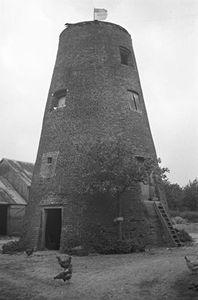
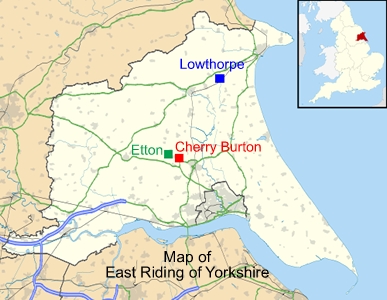
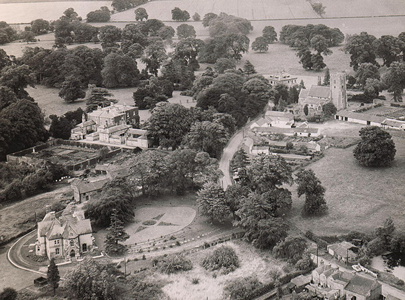
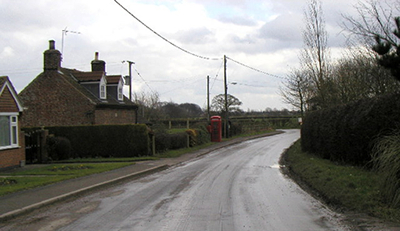 The railway station closed many years ago and trains no longer stop at Lowthorpe, buildings once used for storage have now been renovated and are private residences, the old post office is now also a private house. Automatic barriers nowadays police the crossing.
The railway station closed many years ago and trains no longer stop at Lowthorpe, buildings once used for storage have now been renovated and are private residences, the old post office is now also a private house. Automatic barriers nowadays police the crossing. East Yorkshire and the Yorkshire Wolds: Magnificent scenery in a countryside of unrivalled beauty and varied heritage. The Wolds are an outstanding and unspoiled range of hills along the banks of the Humber river; a destination to which visitors return year after year. The Yorkshire Wolds are a series of gently undulating hills and valleys, south of the North York Moors and stretching in an arc from the city of Hull and the market town of Beverley to the coastal resorts of Filey and Bridlington on the Yorkshire coast.
East Yorkshire and the Yorkshire Wolds: Magnificent scenery in a countryside of unrivalled beauty and varied heritage. The Wolds are an outstanding and unspoiled range of hills along the banks of the Humber river; a destination to which visitors return year after year. The Yorkshire Wolds are a series of gently undulating hills and valleys, south of the North York Moors and stretching in an arc from the city of Hull and the market town of Beverley to the coastal resorts of Filey and Bridlington on the Yorkshire coast.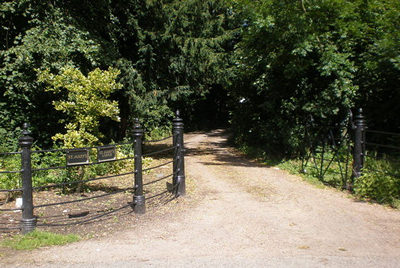 Etton: In its own shallow dale, Etton is a village and civil parish in the East Riding of Yorkshire, England. It is situated approximately four miles north-west of the center of the town of Beverley and two miles west of the village of Leconfield. One mile to the south-east is Cherry Burton. Three miles to the west lies the hamlet of Kiplingcotes; one and a half miles to the south-west is Gardham; and one and a half miles to the north-west lies South Dalton. The village's buildings are almost entirely situated on either side of Main Street. Along this street, lie both the village pub and the parish church of St. Mary (entrance pictured right), which is a Grade II listed building-meaning it has been placed on the Statutory List of Buildings of Special Architectural or Historic Interest. Etton has been known to suffer quite badly during floods, due to its position in a small valley.
Etton: In its own shallow dale, Etton is a village and civil parish in the East Riding of Yorkshire, England. It is situated approximately four miles north-west of the center of the town of Beverley and two miles west of the village of Leconfield. One mile to the south-east is Cherry Burton. Three miles to the west lies the hamlet of Kiplingcotes; one and a half miles to the south-west is Gardham; and one and a half miles to the north-west lies South Dalton. The village's buildings are almost entirely situated on either side of Main Street. Along this street, lie both the village pub and the parish church of St. Mary (entrance pictured right), which is a Grade II listed building-meaning it has been placed on the Statutory List of Buildings of Special Architectural or Historic Interest. Etton has been known to suffer quite badly during floods, due to its position in a small valley.